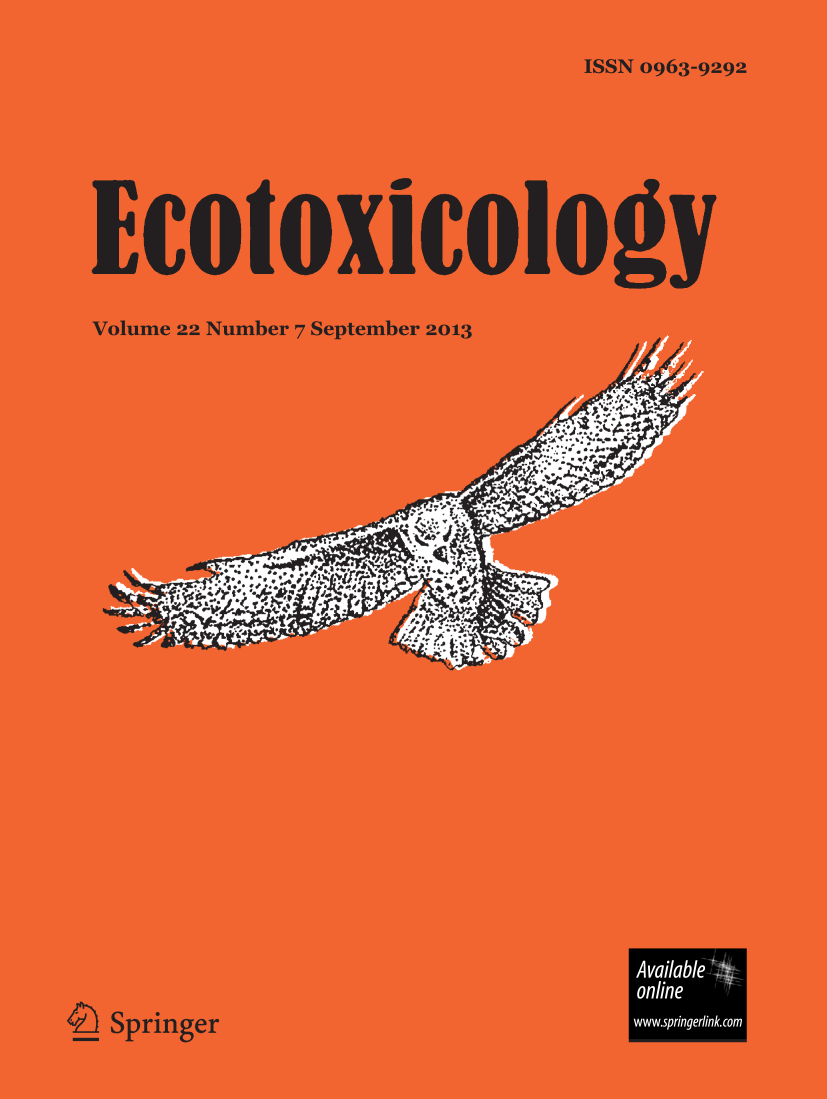下载PDF
{"title":"Evaluation of herbicide formulations and spreading agents on survival of the bumblebee Bombus impatiens following spray and contact exposure.","authors":"Ryleigh V Gelles, Thomas S Davis","doi":"10.1007/s10646-025-02876-x","DOIUrl":null,"url":null,"abstract":"<p><p>Surfactants are often included as co-formulants in the application of herbicides to aid in spreading and adherence to plant surfaces, but toxicity to native bees has not been extensively tested. In a set of progressive experiments, we evaluated effects of products containing glyphosate and spreading agents, as well as spreading agents alone, on bumblebees (Bombus impatiens Cresson) using parametric survival analysis. We test spreaders from multiple chemical classes including Silwet L-77© (trisiloxane), Alligare 90© (polyoxyethylene), and Southern Ag SA-50© (C10-16 alcohols). We report low lethality of high-glyphosate herbicide formulations (Rodeo©), but bee mortality increased ~20% with addition of a silicone-based spreading agent (Silwet L-77©). Spreaders alone strongly affected bee survival: effects were concentration-specific and did not differ depending on exposure method (spray application vs. application to surfaces contacted by bees). The widely used trisiloxane-based spreader Silwet L-77© was especially hazardous, and exposure to high concentrations of Silwet L-77© caused rapid and near-total mortality in B. impatiens. Analysis of whole-bee cuticle extracts after exposure revealed clear differences in the cuticular hydrocarbon profiles associated with exposure to spreading agents: the alkane n-hexacosane was present in all extracts but was detected in greater relative abundance from bees exposed to Silwet L-77© and Alligare 90©. To support wild bee conservation efforts, we recommend substituting alcohol-based spreaders for siloxane-based spreaders when possible. In addition, certain cuticular hydrocarbons may be useful as biomarkers of previous exposure to certain surfactants, which can aid investigations evaluating causes of bumblebee decline across landscapes.</p>","PeriodicalId":11497,"journal":{"name":"Ecotoxicology","volume":" ","pages":"736-745"},"PeriodicalIF":2.7000,"publicationDate":"2025-07-01","publicationTypes":"Journal Article","fieldsOfStudy":null,"isOpenAccess":false,"openAccessPdf":"https://www.ncbi.nlm.nih.gov/pmc/articles/PMC12254061/pdf/","citationCount":"0","resultStr":null,"platform":"Semanticscholar","paperid":null,"PeriodicalName":"Ecotoxicology","FirstCategoryId":"93","ListUrlMain":"https://doi.org/10.1007/s10646-025-02876-x","RegionNum":4,"RegionCategory":"环境科学与生态学","ArticlePicture":[],"TitleCN":null,"AbstractTextCN":null,"PMCID":null,"EPubDate":"2025/3/18 0:00:00","PubModel":"Epub","JCR":"Q2","JCRName":"ECOLOGY","Score":null,"Total":0}
引用次数: 0
引用
批量引用
Abstract
Surfactants are often included as co-formulants in the application of herbicides to aid in spreading and adherence to plant surfaces, but toxicity to native bees has not been extensively tested. In a set of progressive experiments, we evaluated effects of products containing glyphosate and spreading agents, as well as spreading agents alone, on bumblebees (Bombus impatiens Cresson) using parametric survival analysis. We test spreaders from multiple chemical classes including Silwet L-77© (trisiloxane), Alligare 90© (polyoxyethylene), and Southern Ag SA-50© (C10-16 alcohols). We report low lethality of high-glyphosate herbicide formulations (Rodeo©), but bee mortality increased ~20% with addition of a silicone-based spreading agent (Silwet L-77©). Spreaders alone strongly affected bee survival: effects were concentration-specific and did not differ depending on exposure method (spray application vs. application to surfaces contacted by bees). The widely used trisiloxane-based spreader Silwet L-77© was especially hazardous, and exposure to high concentrations of Silwet L-77© caused rapid and near-total mortality in B. impatiens. Analysis of whole-bee cuticle extracts after exposure revealed clear differences in the cuticular hydrocarbon profiles associated with exposure to spreading agents: the alkane n-hexacosane was present in all extracts but was detected in greater relative abundance from bees exposed to Silwet L-77© and Alligare 90©. To support wild bee conservation efforts, we recommend substituting alcohol-based spreaders for siloxane-based spreaders when possible. In addition, certain cuticular hydrocarbons may be useful as biomarkers of previous exposure to certain surfactants, which can aid investigations evaluating causes of bumblebee decline across landscapes.
除草剂配方和扩散剂对大黄蜂喷雾和接触后存活率的影响。
表面活性剂通常作为共配方剂加入除草剂的应用中,以帮助扩散和附着在植物表面,但对本地蜜蜂的毒性尚未得到广泛测试。在一系列渐进式实验中,我们利用参数生存分析评估了含有草甘膦和传播剂的产品以及单独传播剂对大黄蜂(Bombus impatiens Cresson)的影响。我们测试了多种化学类别的涂布剂,包括Silwet L-77©(三硅氧烷),alligator 90©(聚氧乙烯)和Southern Ag SA-50©(C10-16醇)。我们报告了高草甘膦除草剂配方的低致死率(Rodeo©),但添加硅基扩散剂(Silwet L-77©)后蜜蜂死亡率增加了约20%。单独使用喷雾剂会强烈影响蜜蜂的生存:效果是浓度特异性的,并且不取决于暴露方法(喷雾施用与蜜蜂接触的表面施用)。广泛使用的三硅氧烷基散布剂银湿L-77©危害特别大,暴露于高浓度银湿L-77©可使凤仙花迅速死亡,几乎全部死亡。暴露后对全蜜蜂角质层提取物的分析显示,与暴露于扩散剂相关的角质层碳氢化合物分布存在明显差异:所有提取物中都存在正己烷,但暴露于Silwet L-77©和Alligare 90©的蜜蜂中检测到的相对丰度更高。为了支持野生蜜蜂的保护工作,我们建议在可能的情况下用基于酒精的扩散剂代替基于硅氧烷的扩散剂。此外,某些表皮碳氢化合物可能是有用的生物标志物,以前暴露于某些表面活性剂,这可以帮助调查评估大黄蜂在景观中减少的原因。
本文章由计算机程序翻译,如有差异,请以英文原文为准。




 求助内容:
求助内容: 应助结果提醒方式:
应助结果提醒方式:


